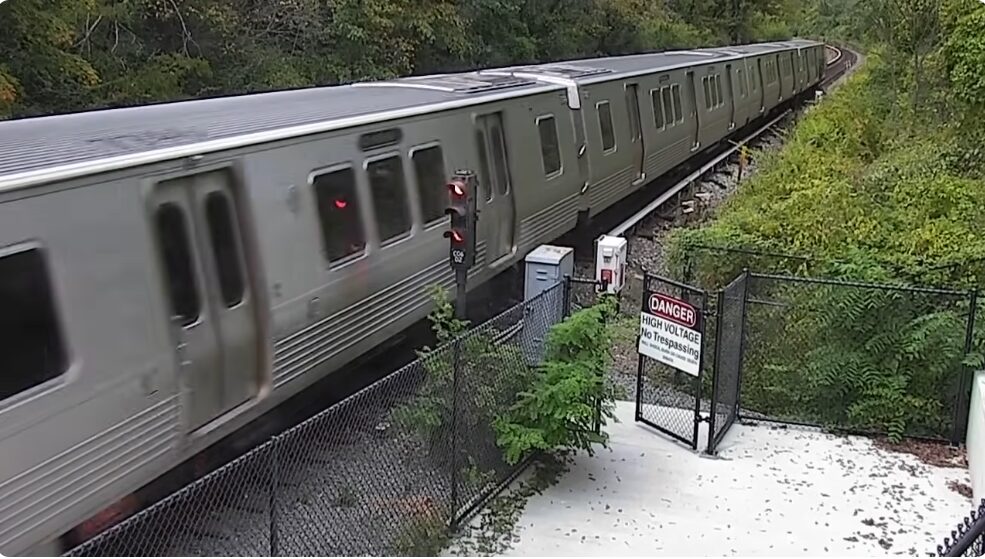Introduction: Tie Plate Slip Derailment?
Tie plate sliding derailment threatens railway safety and functionality. Tie plates, part of railway track structures, slip or shift. This disruption can cause derailment, damaging the track and trains. Railway operators worldwide worry about tie plate slide derailment, which can cause costly repairs, service interruptions, and passenger and freight safety issues.
This article will discuss tie plate slide derailment, its causes, its effects on railway systems, and how to prevent it. Understanding tie plate slip derailment is essential for rail safety and efficiency, whether you’re a railway engineer, safety officer, or rail technician.
Table of Contents
Tie Plates—Why Are They Important?
Flat metal tie plates transfer rail weight equally across wooden or concrete ties on railway tracks. Rails are secured to ties by these plates, preventing displacement under train pressure. Tie plates help keep train tracks aligned and stable under large loads.
However, tie plate slide derailments can occur when tie plates shift or misalign owing to wear and tear or external sources. Slipping or misaligning the rail can cause it to go off track and derail. Railway firms must properly install and maintain tie plates to avoid this.
Tie Plate Slip Derailment Causes
Several circumstances can cause tie plate slip derailment. Preventing future mishaps and maintaining railway integrity requires finding the root reason. There are several main causes of tie plate slip derailment:
1. Track misalignment and uneven pressure
When the track is misaligned or train pressure is unequal, the tie plates can shift. This misalignment makes the track unstable and increases tie plate slip derailment risk. Train vibrations can worsen the issue over time.
2. Improper Tie Plate Installation
Poorly placed or fastened tie plates can potentially cause slip derailment. Plates may shift or slide if not correctly attached to the ties, especially in busy train regions. This is generally caused by faulty installation or worn equipment.
3. Extreme wear
Tie plates and track wear can increase as railroads age. Wear from repeated pressure or corrosion can cause tie plates to lose their rail-securing capabilities. This weakness increases tie plate slip derailment danger. Maintaining and replacing worn parts regularly reduces this risk.
4. Environment and Weather
Extreme weather, rain, and snow can potentially cause tie plate slip derailment. These conditions can expand or contract track structural materials, affecting tie plate fit and alignment. Moisture or ice near the ties can further degrade the track.
5. Train congestion and overload
Heavy rail traffic or train car overloads can cause tie plates to shift or slip. Train overloads increase the risk of tie plate slide derailment, especially if the track is not constructed to handle such loads.
Railway System Impacts of Tie Plate Slip Derailment
Tie plate slip derailment has serious effects. There are operational, safety, and financial consequences as well as physical damage to the rail and track system. Some key effects:
1. Train/Track Damage
Tie plate slide derailments can damage track and train. Trains can break down due to twisted or warped rails. Costly repairs, downtime, and component replacement are common with this damage.

2. Freight and Passenger Safety Risks
Tie plate slip derailment’s biggest risk is to passengers and cargo. A derailment can injure or kill passengers and destroy goods. Preventing tie plate slide derailments is a primary railway safety issue.
3. Operational Issues
A derailment can impede rail services for hours or days, depending on its severity. Repairs may delay train timetables and close lines, disrupting operations. Railway operators may lose money and travellers may be inconvenienced.
4. Expensive Maintenance
Tie plate slip derailment repairs are costly. Repairing broken tie plates, tracks, and train components can be costly, and stopping operations can add to the bill. Avoiding these pricey complications requires regular maintenance and inspection.
Stopping Tie Plate Slips
Several precautions can prevent tie plate slip derailment. This includes:
1. Regular Track Checks
Track and tie plate inspections should be done regularly. Wear, misalignment, and corrosion should be rectified immediately. Preventing tie plate slip derailment requires early identification.
2. Tie Plate Installation and Maintenance
Maintaining track stability requires correct tie plate installation and fastening. To avoid tie plate slip derailment, repair broken or old tie plates immediately.
3. Environmental Concerns
Rail operators should use drainage systems and temperature-resistant materials to reduce track expansion and contraction.
4. Limiting train loads
Monitor and enforce train weight limitations to reduce tie plate pressure. Avoiding train overload protects the track and reduces tie plate slip derailment.
Conclusion: Tie Plate Slip Derailment Prevention Matters
In conclusion, tie plate slip derailment threatens rail safety, efficiency, and cost. Railway operators can protect their operations by studying tie plate slip derailment’s origins, impacts, and prevention methods. Preventing tie plate slide derailment requires regular inspections, track component installation and maintenance, environmental awareness, and train load limitations. By prioritising these principles, railway systems can operate securely and effectively, reducing risks and maintaining seamless passenger and freight flow.




